Topics
Category
Era
Lowry, Thomas (1843–1909)
Thomas Lowry was one of the most influential and admired men in Minneapolis at the time of his death in 1909. Streetcars, railroads, libraries, and many other endeavors benefited from his involvement.
Thomas Lowry was born on February 27, 1843, on a small farm in Logan County, Illinois. He spent his childhood there, attending country schools. At age seventeen, he left home to study at Lombard University in Galesburg, Illinois, but he had to leave the college at age twenty because of tuberculosis.
Lowry spent a year traveling along the Missouri River before returning to Illinois to finish his education. He read law at the office of Judge John C. Bagby in Rushville, and after passing the bar in 1867, Lowry left Illinois for Minneapolis. He arrived in the city in July with few possessions and little money, but his fortunes quickly improved.
Within two years he entered into a law partnership with Austin H. Young, who became Judge of the Court of Common Pleas for Hennepin County in 1871. Around the same time, Lowry married Beatrice Goodrich and began investing in real estate. He guessed correctly that Minneapolis was a growing community and that land would become valuable.
Gradually Lowry's business shifted from law to real estate investments. During the 1870s, more than one-third of the property that is now Minneapolis passed through Lowry's hands. He built his family's home in the Minneapolis neighborhood still known as Lowry Hill, then at the edge of the city.
Lowry became interested in streetcars as a way to drive the development of his outlying real estate holdings. In 1875, he became part of the revived Minneapolis Street Railway Company along with Colonel William S. King and out-of-state investors. King ran the company at first, but in 1878, Lowry became president. He held the position for the rest of his life and made the streetcar company his primary business.
Lowry led Minneapolis Street Railway Company through the boom years of the 1880s and the rough times following the Panic of 1893. The company, which merged with the Lowry-controlled St. Paul City Railway Company in 1891, finally became profitable in the twentieth century as Twin City Rapid Transit Company. Lowry almost went bankrupt in the process, but he kept the company afloat and growing through personal charm and an international network of contacts and investors.
Lowry was an unfailing booster of Minneapolis. In addition to his streetcar business, he was a founding member and later president of the Minneapolis, St. Paul and Sault Ste. Marie Railroad Company, better known as the Soo Line Railway. He worked with William de la Barre and Charles Alfred Pillsbury on the Lower Dam Hydro Plant, just below St. Anthony Falls, and his Twin City Rapid Transit Company used all the power the plant produced as soon as it was finished in 1897.
Lowry helped get the West Hotel built, and he was instrumental in bringing the Republican National Convention of 1892 to Minneapolis. He was a founding member of the Minneapolis Library Board and a sponsor of the city's 1887 Industrial Exposition. He also donated large tracts of land to the city for public parks. On January 11, 1892, Lowry's contemporaries honored him with a public banquet at the West Hotel, in recognition of all he had done for the region.
During the last four years of his life, Lowry again battled tuberculosis. He gradually withdrew from public life and spent the winter months in Arizona and Texas for his health. He died at home on February 4, 1909, with his wife and two of his three children in attendance. His passing made front page news in the local papers and many columns were dedicated to remembrances of him.
In 1915, a memorial with a life-size bronze statue of Lowry was created by sculptor Karl Bitter. It was erected at the intersection of Hennepin and Lyndale avenues. With the construction of I-94 in 1966, the memorial was moved a few blocks to 24th Street and Hennepin Avenue.
Bibliography
Atwater, Isaac, ed. History of the City of Minneapolis, Minnesota. Vol. 1. New York: Munsell and Company, Publishers, 1893.
Bray, Martha C. "The Minnesota Academy of Natural Sciences." Minnesota History 39, no.3 (Fall 1964): 111–122.
http://collections.mnhs.org/MNHistoryMagazine/articles/39/v39i03p111-122.pdf
"Bronze Memorial to Thomas Lowry, Unveiled Before Throng of Friends, Officials and Citizens, is Presented to Minneapolis." Minneapolis Journal, August 18, 1915.
Burke, Evelyn. "The Lowry Family." Northwest Life 17, no. 7 (July 1944): 23–24.
"Complimentary Banquet to Thomas Lowry." Minneapolis Tribune, January 12, 1892.
Lanegran, David A., with the assistance of Carol L. Urness. Minnesota on the Map. St. Paul: Minnesota Historical Society Press, 2008.
Lowry, Goodrich. Streetcar Man. Minneapolis: Lerner Publications Company, 1979.
Pearson, Marjorie and Penny A. Petersen, Hess, Roise and Company. Rapids, Reins, Rails: Transportation on the Minneapolis Riverfront. Prepared for The Saint Anthony Falls Heritage Board, May 2009.
"The Rapid Transit Question." Minneapolis Tribune, July 19, 1889.
Shutter, Marion D. History of Minneapolis: Gateway to the Northwest. Vols. 1 and 2. Chicago: The S.J. Clarke Publishing Company, 1923.
Staples, Loring M. The West Hotel Story. Minneapolis: Carlson Printing Company, 1979.
"Thomas Lowry, Distinguished and Well Beloved Citizen, is Dead." Minneapolis Tribune, February 5, 1909.
"Thomas Lowry is Dead After Long Illness." Minneapolis Journal, February 4, 1909.
"Thos. Lowry's Life is Ended." St. Paul Dispatch, February 4, 1909.
Related Resources
Primary
Twin City Rapid Transit Company Records, 1872–2001 (bulk 1890–1965)
Manuscript Collection, Minnesota Historical Society, St. Paul
http://www2.mnhs.org/library/findaids/00207.xml
Description: Records of the company (and its subsidiaries and successors) that operated the streetcar and local bus system in the Minneapolis-St. Paul metropolitan area.
P2071
Edward T. Abbott Reminiscences, [undated]
Manuscript Collection, Minnesota Historical Society, St. Paul
Description: Papers include personal remembrances of Thomas Lowry.
P2086
Edward M. Conant Reminiscences, 1943–1953
Manuscript Collection, Minnesota Historical Society, St. Paul
Description: Papers include personal remembrances of Thomas Lowry.
P939
The Recollections of Edward W. Decker, 1954
Manuscript Collection, Minnesota Historical Society, St. Paul
Description: Papers include personal remembrances of Thomas Lowry.
P2382
Clive T. Jaffray Reminiscences, 1956
Manuscript Collection, Minnesota Historical Society, St. Paul
Description: Papers include personal remembrances of Thomas Lowry.
P39
Eva McDonald Valesh Papers, 1891–1983 (bulk 1891–1957)
Manuscript Collection, Minnesota Historical Society, St. Paul
Description: Papers include personal remembrances of Thomas Lowry.
Formal Opening of the West Hotel, Minneapolis, Minn. Minneapolis: Geesaman and Murphy, Printers, 1884.
Lowry, Thomas. Personal Reminiscences of Abraham Lincoln. London: Privately printed for Beatrice M. Lowry and her friends, 1910.
"Wedding the Twins." Minneapolis Evening Journal, November 20, 1884.
Secondary
Anderson, Marcia. "Munsingwear: An Underwear for America." Minnesota History 50, no.4 (Winter 1986): 152–161.
http://collections.mnhs.org/MNHistoryMagazine/articles/50/v50i04p152-161.pdf
Dennis, James M. Karl Bitter: Architectural Sculptor, 1867–1915. Madison: University of Wisconsin Press, 1967.
"Eustis Decorates Lowry." Minneapolis Journal, June 4, 1892.
Kane, Lucile M. The Falls of St. Anthony: The Waterfall that Built Minneapolis. St. Paul: Minnesota Historical Society Press, 1987.
Lanegran, David, and Biloine W. Young. "How the Trolleys Came and Went." Mpls. St. Paul 24, no. 6 (June 1996): 58–61, 108–110.
Lowry, Goodrich. "Tom Lowry and the Launching of the Street Railway System." Ramsey County History 18, no. 2 (1983): 3–10.
Meyer, Herbert W. "History of St. Anthony Falls Water Power Co. and Minneapolis Mill Co." Reprinted from Our Shield (November 1955-March 1956): 80–97.
Nelson, David K. "A Rolling Memento." Civil War Times Illustrated 34 no. 1 (March/April 1995): 54–59.
Editor's Note: Thomas Lowry purchased the funeral train car of Abraham Lincoln and had it on display in Columbia Heights.
Northwestern National Bank of Minneapolis: The First 75 Years. Minneapolis: Northwestern National Bank, 1947.
Ogland, James W. "Picturing Lake Minnetonka." Minnesota History 57, no. 6 (Summer 2001): 296–304.
http://collections.mnhs.org/MNHistoryMagazine/articles/57/v57i06p296-304.pdf
Pennefeather, Shannon, ed. Mill City: A Visual History of the Minneapolis Mill District. St. Paul: Minnesota Historical Society Press, 2003.
Related Images
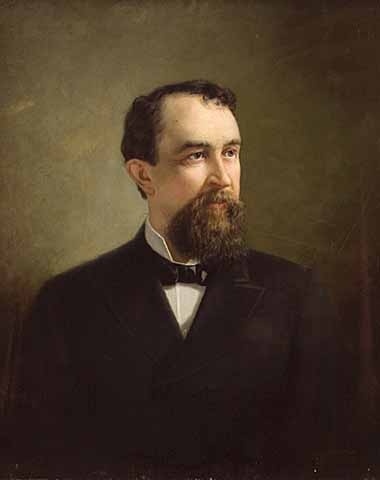
Thomas Lowry
Holding Location
Articles
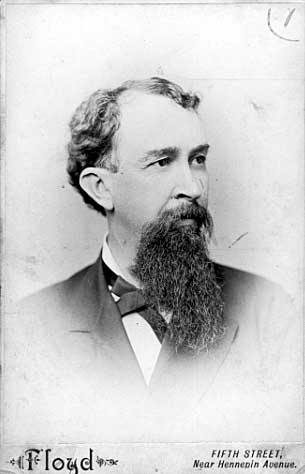
Thomas Lowry
Public domain
Holding Location
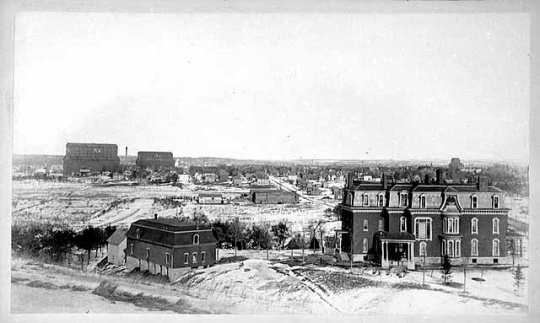
Thomas Lowry residence
Public domain
Holding Location
Articles
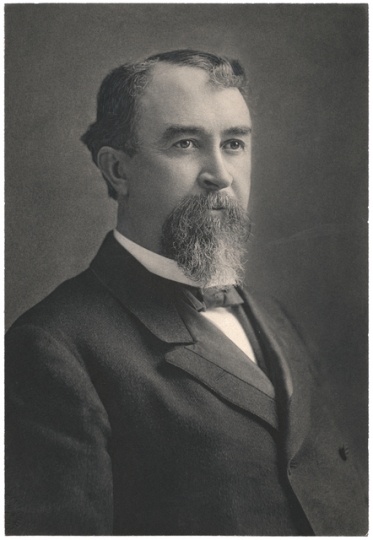
Thomas Lowry
Holding Location
Articles
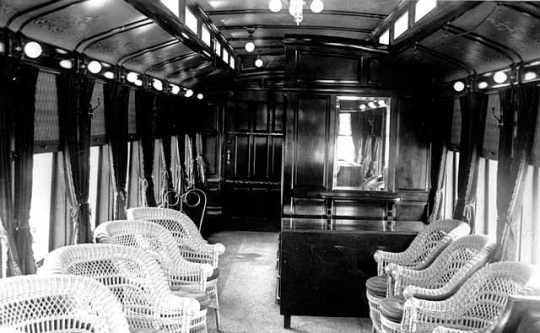
Interior of Thomas Lowry's private car
Public domain
Holding Location
Articles
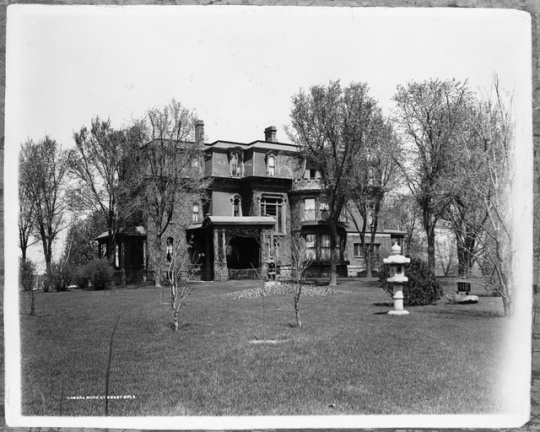
Thomas Lowry home
Public domain
Holding Location
Articles
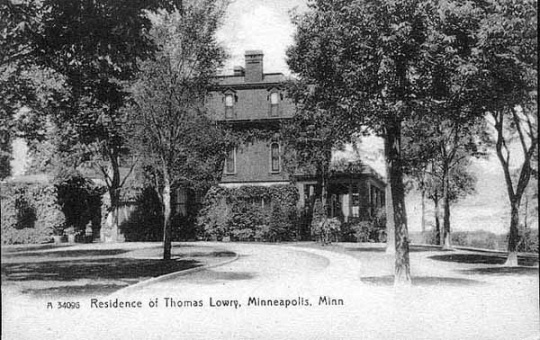
Residence of Thomas Lowry
Public domain
Holding Location
Articles
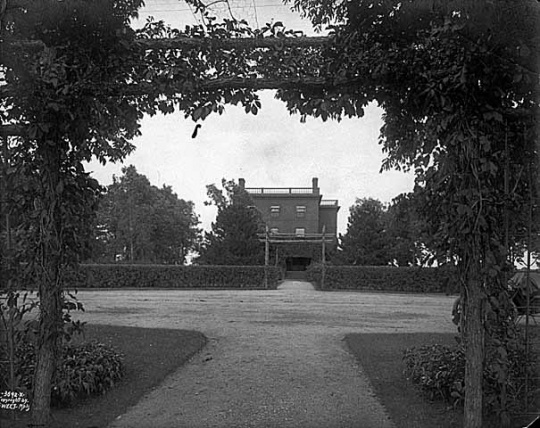
Thomas Lowry's country estate, Monticello
Public domain
Holding Location
Articles
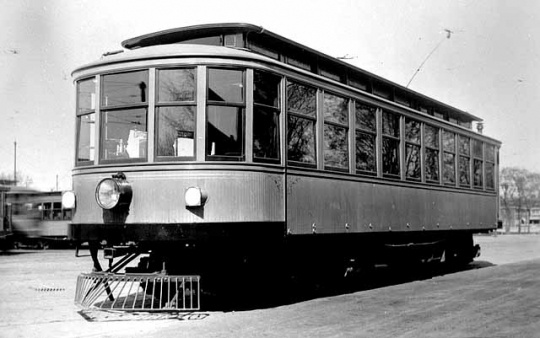
Thomas Lowry's private car at Nicollet
Public domain
Holding Location
Articles
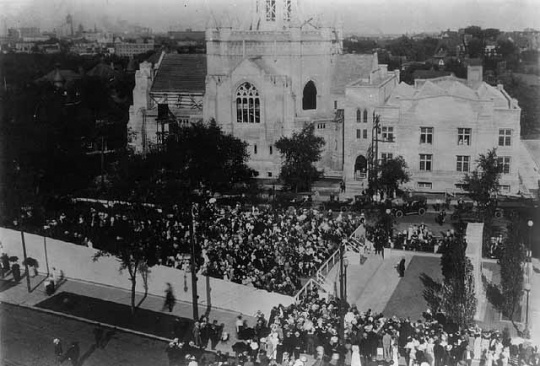
Dedication of Thomas Lowry memorial
Public domain
Holding Location
Articles
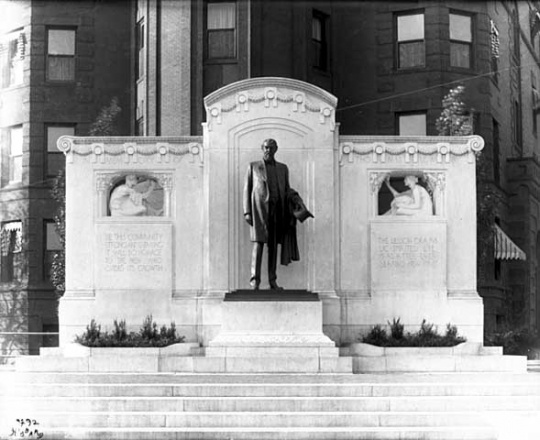
Thomas Lowry monument
Public domain
Holding Location
Articles
More Information
Related Articles
Turning Point
In 1878, Thomas Lowry becomes president of Minneapolis Street Railway Company, later Twin City Rapid Transit Company. In this role, he helps Minneapolis grow and develop.
Chronology
1843
1867
1878
1892
1909
1915
Bibliography
Atwater, Isaac, ed. History of the City of Minneapolis, Minnesota. Vol. 1. New York: Munsell and Company, Publishers, 1893.
Bray, Martha C. "The Minnesota Academy of Natural Sciences." Minnesota History 39, no.3 (Fall 1964): 111–122.
http://collections.mnhs.org/MNHistoryMagazine/articles/39/v39i03p111-122.pdf
"Bronze Memorial to Thomas Lowry, Unveiled Before Throng of Friends, Officials and Citizens, is Presented to Minneapolis." Minneapolis Journal, August 18, 1915.
Burke, Evelyn. "The Lowry Family." Northwest Life 17, no. 7 (July 1944): 23–24.
"Complimentary Banquet to Thomas Lowry." Minneapolis Tribune, January 12, 1892.
Lanegran, David A., with the assistance of Carol L. Urness. Minnesota on the Map. St. Paul: Minnesota Historical Society Press, 2008.
Lowry, Goodrich. Streetcar Man. Minneapolis: Lerner Publications Company, 1979.
Pearson, Marjorie and Penny A. Petersen, Hess, Roise and Company. Rapids, Reins, Rails: Transportation on the Minneapolis Riverfront. Prepared for The Saint Anthony Falls Heritage Board, May 2009.
"The Rapid Transit Question." Minneapolis Tribune, July 19, 1889.
Shutter, Marion D. History of Minneapolis: Gateway to the Northwest. Vols. 1 and 2. Chicago: The S.J. Clarke Publishing Company, 1923.
Staples, Loring M. The West Hotel Story. Minneapolis: Carlson Printing Company, 1979.
"Thomas Lowry, Distinguished and Well Beloved Citizen, is Dead." Minneapolis Tribune, February 5, 1909.
"Thomas Lowry is Dead After Long Illness." Minneapolis Journal, February 4, 1909.
"Thos. Lowry's Life is Ended." St. Paul Dispatch, February 4, 1909.
Related Resources
Primary
Twin City Rapid Transit Company Records, 1872–2001 (bulk 1890–1965)
Manuscript Collection, Minnesota Historical Society, St. Paul
http://www2.mnhs.org/library/findaids/00207.xml
Description: Records of the company (and its subsidiaries and successors) that operated the streetcar and local bus system in the Minneapolis-St. Paul metropolitan area.
P2071
Edward T. Abbott Reminiscences, [undated]
Manuscript Collection, Minnesota Historical Society, St. Paul
Description: Papers include personal remembrances of Thomas Lowry.
P2086
Edward M. Conant Reminiscences, 1943–1953
Manuscript Collection, Minnesota Historical Society, St. Paul
Description: Papers include personal remembrances of Thomas Lowry.
P939
The Recollections of Edward W. Decker, 1954
Manuscript Collection, Minnesota Historical Society, St. Paul
Description: Papers include personal remembrances of Thomas Lowry.
P2382
Clive T. Jaffray Reminiscences, 1956
Manuscript Collection, Minnesota Historical Society, St. Paul
Description: Papers include personal remembrances of Thomas Lowry.
P39
Eva McDonald Valesh Papers, 1891–1983 (bulk 1891–1957)
Manuscript Collection, Minnesota Historical Society, St. Paul
Description: Papers include personal remembrances of Thomas Lowry.
Formal Opening of the West Hotel, Minneapolis, Minn. Minneapolis: Geesaman and Murphy, Printers, 1884.
Lowry, Thomas. Personal Reminiscences of Abraham Lincoln. London: Privately printed for Beatrice M. Lowry and her friends, 1910.
"Wedding the Twins." Minneapolis Evening Journal, November 20, 1884.
Secondary
Anderson, Marcia. "Munsingwear: An Underwear for America." Minnesota History 50, no.4 (Winter 1986): 152–161.
http://collections.mnhs.org/MNHistoryMagazine/articles/50/v50i04p152-161.pdf
Dennis, James M. Karl Bitter: Architectural Sculptor, 1867–1915. Madison: University of Wisconsin Press, 1967.
"Eustis Decorates Lowry." Minneapolis Journal, June 4, 1892.
Kane, Lucile M. The Falls of St. Anthony: The Waterfall that Built Minneapolis. St. Paul: Minnesota Historical Society Press, 1987.
Lanegran, David, and Biloine W. Young. "How the Trolleys Came and Went." Mpls. St. Paul 24, no. 6 (June 1996): 58–61, 108–110.
Lowry, Goodrich. "Tom Lowry and the Launching of the Street Railway System." Ramsey County History 18, no. 2 (1983): 3–10.
Meyer, Herbert W. "History of St. Anthony Falls Water Power Co. and Minneapolis Mill Co." Reprinted from Our Shield (November 1955-March 1956): 80–97.
Nelson, David K. "A Rolling Memento." Civil War Times Illustrated 34 no. 1 (March/April 1995): 54–59.
Editor's Note: Thomas Lowry purchased the funeral train car of Abraham Lincoln and had it on display in Columbia Heights.
Northwestern National Bank of Minneapolis: The First 75 Years. Minneapolis: Northwestern National Bank, 1947.
Ogland, James W. "Picturing Lake Minnetonka." Minnesota History 57, no. 6 (Summer 2001): 296–304.
http://collections.mnhs.org/MNHistoryMagazine/articles/57/v57i06p296-304.pdf
Pennefeather, Shannon, ed. Mill City: A Visual History of the Minneapolis Mill District. St. Paul: Minnesota Historical Society Press, 2003.












